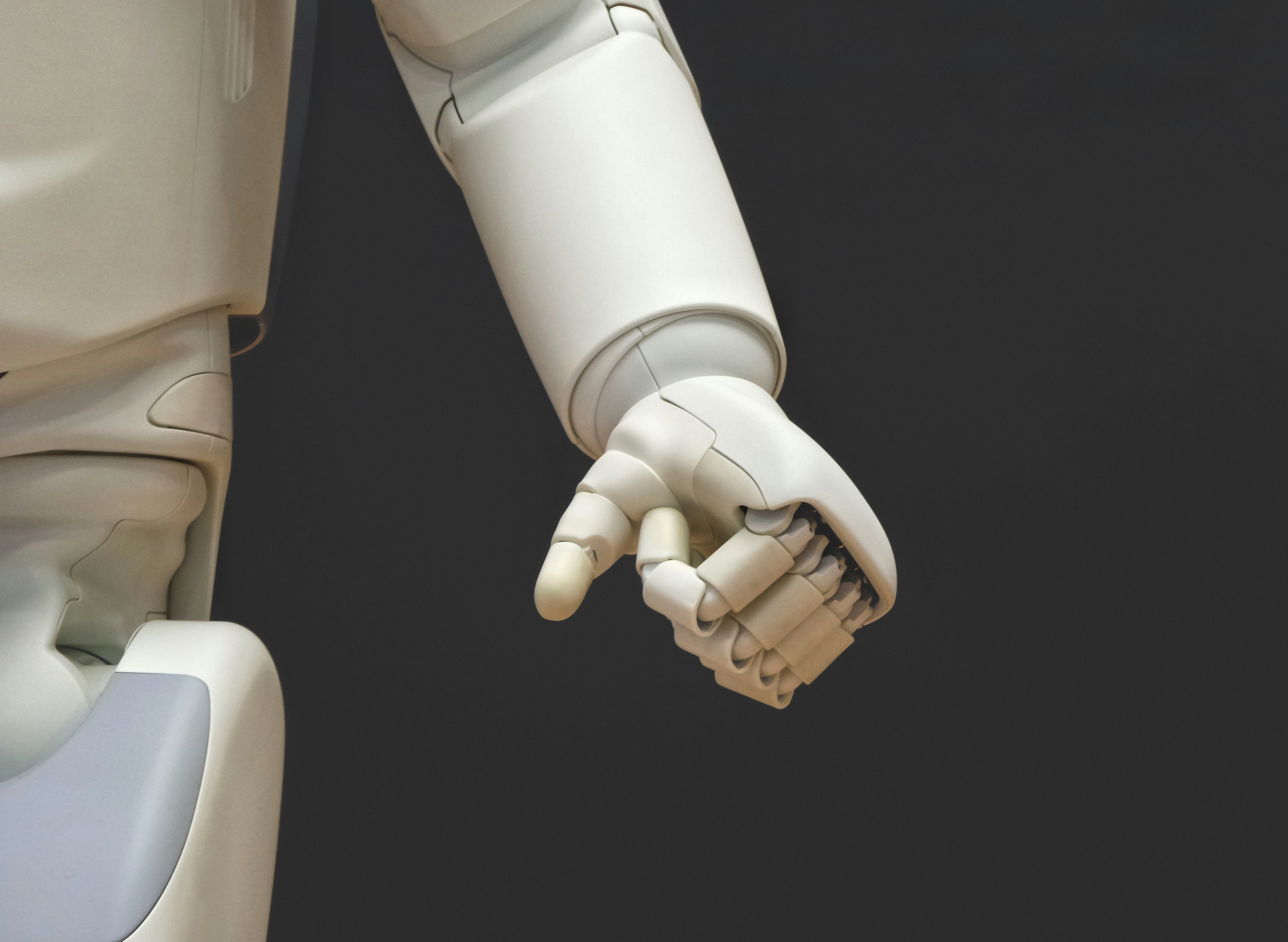Harnessing the Power of AI and Consumer Robots at Home
August 25, 2024 | by joet99@gmail.com
 Photo by Possessed Photography on Unsplash
Photo by Possessed Photography on Unsplash Consumer robots are increasingly becoming pivotal in modern households, significantly transforming our day-to-day living experiences. Over recent years, advancements in technology, particularly in Artificial Intelligence (AI), have led to a proliferation of various types of consumer robots. These devices are designed to ease our routines, enhance productivity, and even provide companionship.
Cleaning Robots: The market for cleaning robots, such as robotic vacuum cleaners and mopping robots, has seen remarkable growth. These robots are equipped with AI algorithms that allow them to map and navigate through your home efficiently. They can identify different surfaces—be it carpet, hardwood, or tile—and adjust their cleaning mechanisms accordingly. Some advanced models even come with features like self-emptying dustbins and scheduling capabilities, offering an almost hands-free cleaning solution.
Personal Assistants: AI-integrated personal assistant robots are another category gaining popularity. These robots, often equipped with smart speakers and responsive AI, perform tasks that range from managing your calendar, setting reminders, to controlling smart home devices. More advanced versions can even recognize individuals through facial recognition technology, providing a more personalized user experience. Additionally, these robots can learn from user interactions, continually enhancing their functionality to cater to specific needs.
Pet Robots: Pet robots, or companion robots, are especially beneficial for individuals seeking companionship or those unable to care for living pets. These robots, often designed to mimic the appearance and behavior of real pets, can respond to touch, sound, and even exhibit emotional responses due to sophisticated AI programming. They offer a form of comfort and interaction that can be particularly beneficial for the elderly or individuals with conditions such as autism.
The integration of AI in consumer robots has revolutionized their capabilities, making them not just tools but proactive participants in home management. AI enables these robots to learn from their environment and user interactions, refining their performance over time. For instance, a personal assistant robot can adapt to your routine, anticipating your needs and acting accordingly. Similarly, a cleaning robot can optimize its cleaning paths based on previous sessions.
Ultimately, the contributions of these intelligent machines to our daily lives are substantial. By automating mundane tasks like cleaning, they free up valuable time for more meaningful activities. Personal assistant robots can help manage busy schedules, ensuring efficiency and reducing stress. Companion robots offer social interaction and emotional support, enhancing the quality of life, especially for vulnerable populations. Through real-world applications and ongoing advancements, consumer robots continue to pave the way for a smarter, more convenient, and connected home environment.
Living and Collaborating with Humanoid Robots
As we integrate humanoid robots into our daily lives, it becomes essential to understand the dynamics of human-robot interaction. Humanoid robots are meticulously designed to simulate human-like behaviors and emotions, thereby making them more relatable to us. This design philosophy enhances user interactions, as it aligns the robots’ responses with our expectations of human communication.
Experts suggest that to foster a productive and harmonious relationship with humanoid robots, users must recognize these robots’ ‘psychology’—a term used to describe their programmed behavioral patterns and emotional expressions. By understanding and effectively interacting with these behaviors, users can train robots to perform tasks more efficiently. Best practices include clear communication through verbal commands and consistent feedback, which help robots learn and adapt to individual user preferences.
The realm of human-robot collaboration is expanding, with robots aiding in tasks that range from household chores to complex industrial operations. In homes, these robots can support daily routines by performing tasks such as cleaning, cooking, and providing companionship. By fostering a positive coexistence, users can significantly enhance their quality of life while leveraging the convenience and efficiency provided by these intelligent machines.
Recent studies highlight both the potential and limitations of humanoid robots. For instance, while robots are capable of executing complex tasks, their performance can be hindered by unpredictable environments or tasks requiring a high degree of human judgment. Interviews with industry experts reveal that as artificial intelligence (AI) evolves, so too will the capabilities of consumer robots, reducing these limitations and opening new avenues for human-robot collaboration.
However, the ethical implications of living with humanoid robots cannot be overlooked. Ensuring privacy, data security, and the ethical treatment of robots are paramount considerations. By adhering to ethical guidelines and fostering mutual respect, users can develop a harmonious and beneficial relationship with their robotic counterparts.
RELATED POSTS
View all

